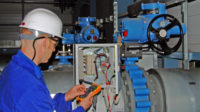In the U.S., the market for mechanical engineering was worth around $421 billion in 2020. It’s clearly a field that has remained very much in demand for decades now. After all, being a mechanical engineer comes with a vast set of benefits.
However, the industry itself is also quite dangerous. Quite a few things can go wrong at the workplace. That’s why it’s crucial to keep the industry as safe and risk-free as possible. Luckily, there are various methods of doing just that, and if you need some help regarding workplace safety as a mechanical engineer, you’ve come to the right place.
This article provides a list of handy safety tips for mechanical engineers. By adhering to these tips, you will reduce the risk of injury at the workplace and have a safe, productive environment ready to thrive.
Familiarizing with OSHA Standards
For those of you not familiar with this term, OSHA is an acronym that stands for Occupational Safety and Health Administration. OSHA is a large regulatory agency of the U.S. Department of Labor, whose job is to help reduce workplace injuries, accidents, and fatalities. The organization does that by enforcing specific workplace standards and inspecting companies to check if the CEOs adhere to said standards to the letter.
Both as a worker and a business owner, you will want to familiarize yourself with OSHA standards for mechanical engineering. There are two major reasons for doing that. The first relates to your own safety. By learning what the regulations for your workstation are, you can perform your task safely and by the books.
The second major reason for learning OSHA standards is to keep the company accountable. As a business owner, you want to be in good graces with OSHA, or else you might be struck with a penalty. But, more importantly, as a worker, you can spot safety violations and report them to an official body. OSHA also offers whistleblower provisions and an up-to-date protection program that ensures worker safety in cases of reporting violations.
Safety Training
Safety training is a crucial part of any industry, with mechanical engineering being no exception. And while a lot of workers find safety drills and training dull, we can’t emphasize how dangerous it is not to attend them.
By going over the learning program, you will acquire a set of skills necessary for progressing safely with your work. Those include issue reporting, operational practices during an emergency, what numbers to call and experts to talk to if something happens, etc.
One area where mechanical engineers require safety training involves hazardous chemicals. Generally speaking, engineers don’t work with chemicals as often as professionals from other industries might, but they are still required to go through some of the basics. Training to handle dangerous substances usually involves proper protection from exposure, reading material safety data sheets, and knowing how best to react if exposure to these chemicals does occur.
PPE
Personal protection equipment (PPE) is a must in any industry as hazardous as mechanical engineering. According to various OSHA standards, a typical mechanical engineer will need to wear different types of gear depending on their workstation and the level of exposure to danger.
One key element of PPE involves high-visibility clothing. An engineer might be out in the field taking care of the machinery. Hi-vis clothing can help both during the day and at nighttime. As you work during the day, passers-by can easily spot your fluorescent vest or overalls, so if an accident occurs, you can expect help to be on the way soon. During the night, the material of hi-vis clothing reflects light, once again making it easier for someone to spot you.
Naturally, hi-vis clothing is merely one of many gears that a mechanical engineer will require to wear. Depending on what section of the facility they’re in, engineers will require different types of safety eyewear. These can be either glasses, goggles, or face shields. Furthermore, they can either protect your eyes from lasers, chemical splashes, fine particles and small debris, or sudden impact.
Some other types of PPE for mechanical engineers include:
- Hard helmets;
- Steel-toed boots;
- Earplugs;
- Gloves; and
- Respiratory protective equipment (RPE).
Cleanliness
In the broadest terms possible, cleanliness is pretty much self-explanatory. It generally refers to keeping the workstation, the tools, and the machinery as clean and operable as possible. Workers ought to clear out any debris and clutter that presents an obvious obstacle. Furthermore, if there are any spills, the cleaners should mop them up at once. Leaving any liquid untended can result in dangerous fumes. Hoses, cables, and other important items need to be kept in a safe spot away from the workers so that they don’t accidentally snap them doing their everyday work or trip on them.
Of course, workers also need to keep themselves clean. Lack of personal hygiene can result in various diseases and infections spreading all over the workplace. That can severely harm your coworkers and have a serious impact on productivity.
Safety Signs and Key Safe Locations
Not a lot of workers can read safety signs, and that’s a major problem. After all, if you don’t know what a particular sign is warning you of, you can enter a dangerous area without wearing the proper equipment. The best way to tackle this problem is to go over the facility and familiarize yourself with all of the signs. In addition, take notes of where each individual sign is. That way, you’ll know where to find them and how to prepare yourself before entering that area.
And speaking of different areas in your workplace, there are several key safe spots you will need to consider. Those include first aid stations, emergency exits, and all of the spots with fire extinguishers. Learn where all of these places are so you can be prepared in case of an emergency.
Mechanical Engineering and Workplace Safety Summarized
The safety tips in this article will come in handy for any mechanical engineer or CEO. However, they are not limited to this industry alone. If you happen to be employed in a different field, you’ll still want to learn everything you can about safety and the potential dangers of your workstation. Remember, a safe working environment is one that will attract future employees. So, for all of those potential mechanical engineers out there, take these safety tips under serious consideration.




